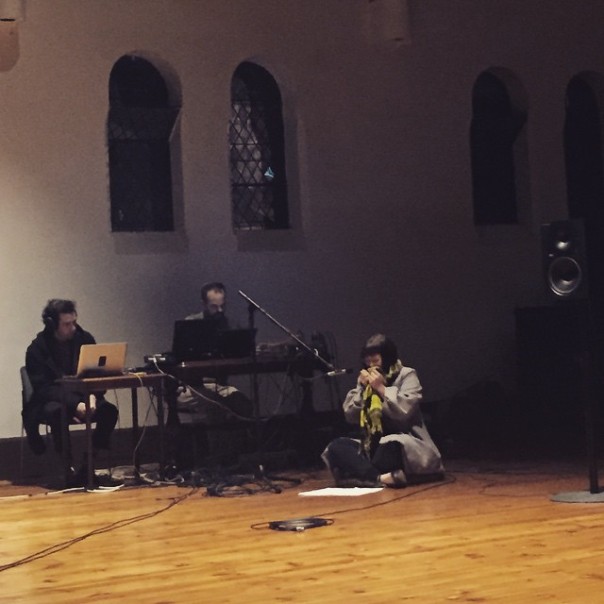Review by Lewis Ingham
Performed by the Argonaut Clarinet Orchestra including 21 community musicians, Small Infinities explored massed groups of identical instruments with a realisation of Horatiu Radulescu’s Capricorn’s Nostalgic Crickets (1972) and a new work by Samuel Dunscombe, Small Infinities Together (2017). As a listener, I felt removed from the communal sound creation that dominates both compositions. However, both works catered to the rare experience of sharing the huge and beautiful Sacred Heart Cathedral with up to 28 clarinetists.
Radulescu’s composition consists of 96 individual sound events that are to be performed by seven identical woodwinds. In the case of this concert, seven clarinets. Each of the 96 events requires the clarinetists to play a multitude of sounds: single pitches, trills, and multiphonics to name a few. Emerging from and receding back into silence, the massed effect of these tones is a complex, pulsating, and dense cloud of sound.
The sound of the seven clarinets in the cathedral is utterly spectacular, particularly when hearing the movement of the upper partials in this spectral work. Due to there only being subtle differences between the sound events, I feel particularly removed from the communal sound creation of the seven performers. The sound is completely mesmerising, but with the 96 sound events being of similar construction and quality, I feel there is a spirituality or experience reserved only for the performers.
In Dunscombe’s composition, the greater number of performers reduces this exclusivity that I feel in Radulescu’s work. The Argonaut Clarinet Orchestra, now featuring 28 clarinetists, is split into four groups of seven players, each with a leader helping to conduct the time-based graphic score. Whereas Radulescu uses specific instructions to achieve his sonic ends, Dunscombe allows each performer greater chance and freedom through his score. This feature of the work is particularly engaging to watch in the community clarinet choir that only began rehearsing on the day of the performance.
Dunscombe exhibits a wonderful control over developing single drones into shimmering harmonic fields, but also allows instability to creep into the piece through various embouchure techniques. In the cathedral, this exploration of dense sustained clusters doesn’t overwhelm the space. But what lacked in the performance was the inclusion of greater percussive elements to utilise a different quality of the space. While Dunscombe does incorporate a number of soft key clicks and tongue slaps in the composition, I feel these are under-utilised as an effect to offset the sustained passages and explore the separate physical spaces each ensemble group occupies, surrounding the audience at the front of the church.
Small Infinities
Argonaut Clarinet Orchestra
Sacred Heart Cathedral
Bendigo International Festival of Exploratory Music
2 September 2017
Horatiu Radulescu, Capricorn’s Nostalgic Crickets; Samuel Dunscombe, Small Infinities Together

